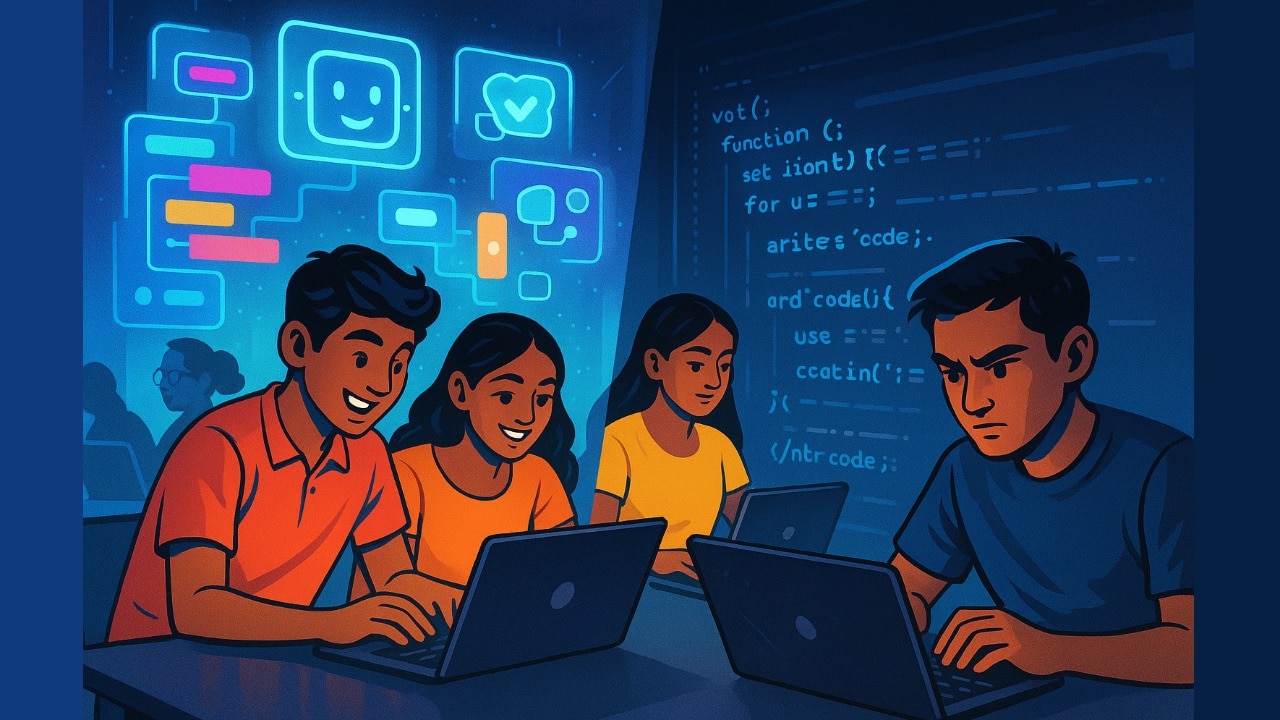Walk into a campus hackathon today and the scene has changed. Teams still argue, still pull all-nighters, still sprint towards a demo. But the tools on the table now often include AI assistants, editor tools that run steps for you, and drag-and-drop code blocks — not just stacks of printed cheat-sheets and C reference manuals.
That shift has a name: vibe coding — a prompt-first, AI-assisted way to build prototypes fast. It’s catching on at colleges and in national contests, and it’s forcing a rethink about what coding education should look like.
advertisement
A SHORT HISTORY: WHY THIS MOMENT MATTERS
Back in the early–mid 2000s, India’s tech boom was well under way. Computer science programmes ballooned, software services grew fast, and the best students often picked computer science over older branches like mechanical or civil.
Programming languages such as C and C++ were the backbone, Java came up as the industry needed it, and later Python became the go-to for beginners and data work.
Students practised online, joined hackathons for prize money and networking, but mostly because it was fun and addictive — a way to build things and learn quickly. That culture laid the foundation for what we see now.
Over the 2010s and 2020s, teaching also changed. Schools added robotics kits and block-based coding (think Scratch or micro:bit) so even younger kids could learn the concepts without drowning in syntax.
Those tools teach concepts — sequence, loops, conditions — using visual blocks, which is great for beginners.
Continue Reading on India Today
This preview shows approximately 15% of the article. Read the full story on the publisher's website to support quality journalism.
